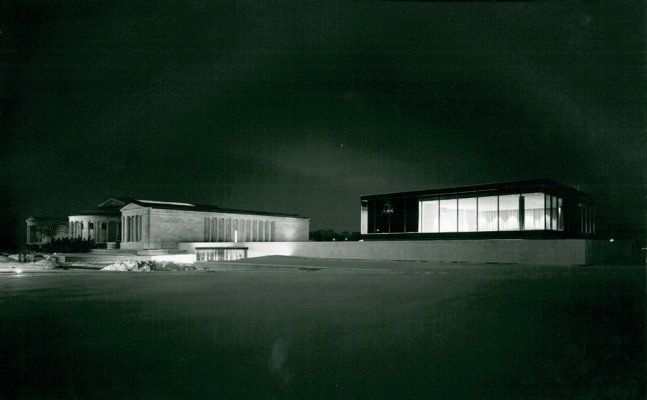The 1962 addition to the Albright Art Gallery was designed by Gordon Bunshaft, one of the most influential architects of the twentieth century. Standing in quiet contrast to the museum’s Greek Revivalist 1905 Building, Bunshaft’s modernist addition was unquestionably new and turned quite a few heads at the time of its completion.
Bunshaft, a partner in the New York architectural firm Skidmore, Owings and Merrill, was engaged to draw up designs for the addition. In March 1959, the Mayor of Buffalo signed a request for further land on the south side of the original building. The new building’s construction was assured when, in June 1960, Seymour H. Knox, Jr., and his family pledged $1,000,000 toward the cost, an amount he subsequently increased to $1,400,000. In recognition of Knox’s extraordinary leadership, the museum’s Board of Directors voted to rename the institution the Albright-Knox Art Gallery on August 7, 1961.
The new building was very much in keeping with Bunshaft’s style. Rather than echo the design of the original building, Bunshaft placed an elegant, modernist glass and marble structure quietly beside it, adding 6,000 square feet of exhibition space and an auditorium. The two buildings have engaged in an architectural dialogue ever since.
Albright-Knox Director Louis Grachos noted, “The Knox Building is a mid-century masterpiece that often gets overshadowed by our grand 1905 Building. Its design is particularly appreciated by living architects, critics, and historians.”
Accepting the master key to the building on January 19, 1962, Knox said, “this is a great day for Buffalo and we are delighted and proud to present our new facilities and our collections for others to share, to study, and to enjoy—today and in the years ahead.”
